FACIAL FEATURES COMPARISON OF IDENTICAL TWINS
by Joelle Steele
 Trying to identify people in photographs can be challenging. People can look so much alike at first glance. But to make a positive identification of a person, everything must be identical. You can't say someone is "probably" Abraham Lincoln or "probably" Aunt Matilda just because they kind of look like or resemble that person. Everything must look EXACTLY the same. This isn't one of those times where 15 out of 32 features makes a positive match. It's 32 out of 32 or it's not a match. Period.
Trying to identify people in photographs can be challenging. People can look so much alike at first glance. But to make a positive identification of a person, everything must be identical. You can't say someone is "probably" Abraham Lincoln or "probably" Aunt Matilda just because they kind of look like or resemble that person. Everything must look EXACTLY the same. This isn't one of those times where 15 out of 32 features makes a positive match. It's 32 out of 32 or it's not a match. Period.
Trying to match up two people's faces is not as easy as it seems. I know, because I am an anthropometrist specializing in analyzing and comparing facial features in order to confirm or authenticate the identities of people in photos. I have been doing this for more than 40 years, and the differences between faces can be so incredibly subtle. It takes a very well-trained eye and a lot of experience to tell for sure whether or not you're looking at two photos of the same person. It is especially difficult if you're examining old family photos, where family resemblances can confuse even the family members. Siblings can often look very much alike, but with a few differences. You've got to look very carefully to see all those differences. In fact, you have to measure the facial features in most cases.
Even monozygotic twins (identical and conjoined twins) that are formed from the same egg are not always completely genetically identical. According to a study published in January 2021 in Nature Genetics, this is a result of genetic mutations that occur in the womb when one or both twins create new strands of DNA that then split into more cells. There can be up to 10 to 15 mutations that occur in the womb shortly after fertilization after the egg split apart. This study included 387 pairs of monozygotic twins, their parents, and their children in order to determine if and how the mutations are passed down through multiple generations.
And some fraternal twins look almost identical. Famous twins like Ashley and Mary Kate Olsen claim that they are fraternal twins, but they have not had DNA testing done to confirm this. They look like identical twins, even down to having the almost stereotypical tendency towards one twin having a long face while the other has a more rounded face. The Kutcher twins are obviously fraternal.
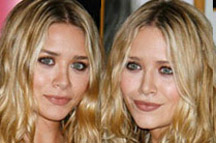
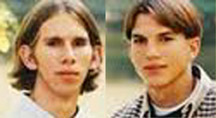
ABOVE: The Olsens (left) claim to be fraternal; real fraternal Kutchers (right).
BELOW: The Ganz twins (left); the young Sprouse twins (right).

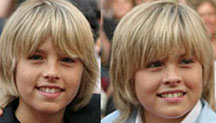
In case you don't see the differences between the twins above, or you don't believe that identical twins are not truly identical, it has been proven time and again that monozygotic twins have variations in their DNA sequences, their fingerprints are different, their weight and height can differ, their facial features placements can vary, and they can have different idiosyncratic traits such as facial lines, scars, or moles. Most of these differences occur during pregnancy when environmental factors such as nutrition, position in the uterus and position relative to the other twin, etc., impact on the development of the twins and their health as well as their appearance.
The following are some photographs of monozygotic conjoined twins, and if you study them closely, you'll see the differences between them.
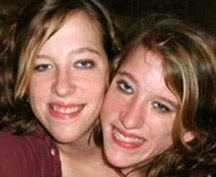
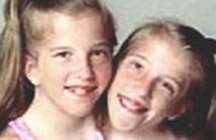
ABOVE: The Hensel conjoined twins in late teens (left); as young kids (right).
BELOW: The Arrita conjoined twins as young teens (left); as adults (right).
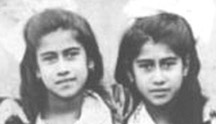
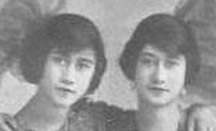
As you can see, even conjoined twins do look different, and those differences are apparent even when they are children. Abigail and Brittany Hensel smile differently and their eyes are different. Mary and Anna Arrita have different shaped faces and their chins vary.

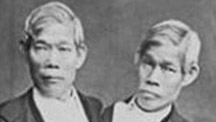
ABOVE: Rosa and Josefa Blažek conjoined twins (left); conjoined Chang & Eng (right).
BELOW: Violet and Daisy Hilton conjoined twins as kids (left); as adults (right).
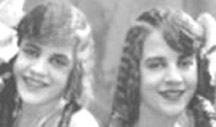
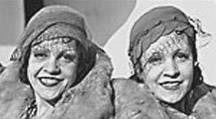
Like the Hensels, the Hilton twins already had a slight difference in face shape as children, and their mouths were very different as well. Parents of twins sometimes can't tell their own children apart at first, but they quickly perceive the sometimes subtle differences. A friend of mine always said she could spot which one of her twins was which from across a playground.
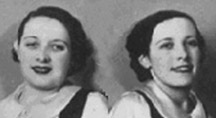
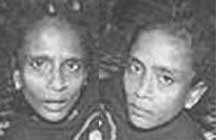
ABOVE: Mary and Margaret Gibb conjoined twins (left); the conjoined Mondal twins (right).
So why all this fuss about identical and conjoined twins and facial features comparison and analysis? Because two people can look very much alike and still be two different people. That is why so many experts who authenticate photos misidentify the people in those photos. But, if you can learn to tell monozygotic twins apart using facial features analysis, you will have no trouble distinguishing between who's who in most photographs.

